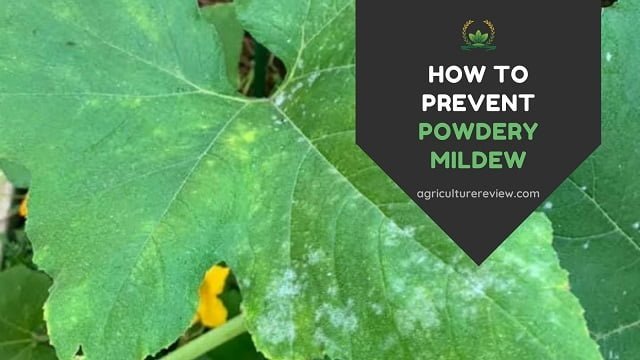Do you want to learn Napier grass cultivation, if yes then you are on the right page. In this article I will guide you on complete details about Napier grass cultivation.
Table of Contents
Introduction of Napier Grass
- Napier grass belongs to the family of Poaceae.
- This grass is tall and its formation will be rousted and the clumps will look like bamboo.
- The reproduction of Napier grass is done in a vegetative way through shoots which are horizontal called stolon which locate above the soil extending from the parent to the offspring.
- Moreover, for the production of Napier grass, less water and nutrients are required. The propagation of Napier grass is done by seeds. Though the production of seeds is not that consistent, the collection part is very tough.
- As an alternative, the plantation of the grass can be done by using stem cuttings of stolon. The plantation of the stem cuttings can be done by insertion of these with the furrows with a distance of 80 centimetres, between and along the rows.
Origin of Napier Grass
Napier grass which is scientifically called as “Pennisetum purpureum” is the one which has its origin in grasslands of Africa.
Economic uses of Napier Grass
- Napier grass is mainly used as a fodder crop. It is used as feed to the cattle directly or it can also be made as hay or even silage. In African countries, it is used as a forage for elephants and hence, it is also termed as elephant grass.
- Napier plant plays a major role in the production of biomass. It can also be harvested up to 6 times in a single year. This makes it a very good raw material for the production of biofuel. The plantation of Napier grass is done in the marginal slopes and lands in order to improve the fertility of the soil and to decrease the erosion of soil.
- Napier grass is the primary source for the production of paper in many regions across the country.
- Napier grass is used in the pest management strategy as a pull crop which attracts the pests to come out of the plant.
- The Napier grass leaves and shoots which are young are considered edible and they are also used to make stews and even soups.
Climate
Though Napier grass is tolerant to drought and can grow well even in the areas which are dry, it is considered to be suitable to grow in the areas where there is high rainfall.
Napier grass does not grow properly in the areas where there is waterlogging. Do not practice napier grass cultivation in soggy soil. It can also be grown in combination with fodder trees along with the boundaries of the field or contour lines to help to prevent the soil erosion.
Napier plant grass can also undergo intercropping with the crops like fodder trees, legumes etc. Napier grass also grows very well at an altitude of 1800 m to 2000m above the sea level. Napier grass also performs well in the temperatures varying between 26°C to 42°C.
Soil
Napier grass can grow in a large variety of soils. The soils which are light loamy and sandy are most preferred and heavy soils are not much encouraged for the growth of Napier grass. Wet soil is preferred at the roots but you need to make sure that it is not stagnated. Napier grass cannot survive in the lands which are waterlogged and prone to floods.
Very good yields are obtained from the soils which are fertile with rich content of organic matter and nutrients. For the cultivation of Napier grass, make sure that the soil pH is between 5 and 8.
Field Preparation
Before starting the cultivation of Napier grass, plough the field and harrow it very well. It should be in such a way that the seedbed should be very good for the plantation.
Sowing of Napier Grass Seeds
The crop of Napier grass will be sown mostly in the last week of February to the last week of August in India. That is when the climate is warm. But, to get a very good yield which results in maximum returns, the sowing should be done by the end of February.
This is because, late sowing gives only one cut by the last week of November and after that, it stays in a dormant stage.
Buy Napier Grass Seeds From Here: Product Napier Grass Seeds
Plantation
For the plantation of Napier grass, there are two methods used:
1.Conventional method
2. Thumbkiza method
The conventional method
In this method, you need to first dig the field up to 20 centimetres wide and 20 centimetres deep by maintaining a distance of up to 90 centimetres in between the rows and a distance of 60 centimetres between the plants.
Make sure that you are applying at least 10 to 12 tonnes of farmyard manure in each and every hole.
Then place a cane which has 3 nodes at a slanted position in the soil by making sure that the two of the nodes are covered with soil.
Now, place the splits of the root in the holes of planting and cover the soil.
You will love reading these too:
READ MORE: RICE CULTIVATION GUIDE!
READ MORE: WASTE DECOMPOSER! BEST WAY TO ORGANIC FARMER
Thumbzika Method
This is the method which gives very high yields of herbage even in the seasons which are dry. This method gives good results than the conventional one.
In Thumbzika method of the plantation, again there are two types. One is Round pit and the other is a rectangular pit.
For the pits which are round, digging should be done at a depth of up to 60 centimetres and a width of 90 centimetres. The distance between the rows of the pits should be 60 centimetres.
For the pits which are rectangular, the pits should be dug at a depth of 60 centimetres and a width of 90 centimetres.
The pits length can change and it is completely dependent on the land which is available. The distance between the pits should be at least 90 centimetres.
Plantation in both round and rectangle type pits:
First, you need to separate the soil at the top from the subsoil. Now mix 1 topsoil : 2 farmyard manure and place it in the pits. There should be a gap of at least 15 cm at the top of every pit.
- Now in the round pits, plantation of about 10 cane cuttings should be done.
- In rectangular pits, plantation of 10 cuttings should be done for every length 90 centimetres.
- Plantation of Napier grass is done at an angle of 30° from the ground.
Two of the nodes of the grass are being buried in the soil and one node will be above the ground level. Plantation of many numbers of rows maintaining a space of at least 3 feet should be done in between the rows. If you are trying to plant slips, there is no need to wait for more time for the grass to grow.
- The establishment of seedlings will be done very rapidly from the slips rather than the ones which are grown from stem cuttings.
- Then remove the stems of Napier grass which are at the ground level in order to remove the green material.
- Now start digging the roots and shoots which have been growing beneath the ground level.
- Each and every seedling has to be separated from the clump. Every seedling should have root and shoot.
- Now, start trimming the roots to a length of about 2.5 inches.
- Plantation of seedlings should be done in holes which are small or it can also be done in furrows.
Now, use soil in order to cover the roots. Make sure that the shoots are left open to air. The entire stem should be planted at the time of heavy rainfall and in the areas which are hilly.
- This is done so that the sprouting of grass will be done rapidly in order to cover the ground.
- Now, the plantation has to be done along the contour line in order to control soil erosion.
- Cut the young stems of the grass completely to a length of about 5 feet.
- Now, put the stems in a furrow in an end-to-end manner and start covering them with soil.
- After this, watering should be done immediately.
Harvesting of Napier Grass
Napier grass is ready for harvesting 3-4 months after planting and harvesting can continue at an interval of 6-8 weeks for 3 – 5 years. Leave a stem length of 10 cm from the ground at harvesting.
Storage
- Napier grass is fed green to livestock.
- Excess green feed can be preserved in the form of silage. Potential Yields depend on agro-ecological zone and management but on average Napier grass can give upto 45 tons/ha of fresh weight.
Utilization of Napier Grass for Cattle
The Napier grass which is harvested should be chopped to decrease the wastage at the time of animal feeding. Grazing should not be done directly to the animals.
You need to only feed up to 60 to 70 kilograms of the Napier grass which is fresh to a cow in a day. Two dairy cows can feed on the Napier grass cultivated in an acre of land in a year.
Advantages of Napier Grass
- The propagation of Napier grass can be done easily. The soft stem of the Napier grass makes it very simple for cutting. The roots of the Napier grass which are deep are the ones which make it resistant to drought.
- The leaves which are young and tender seem very tasty when served as feed to livestock or cattle.
- The growth of Napier grass occurs quickly.





